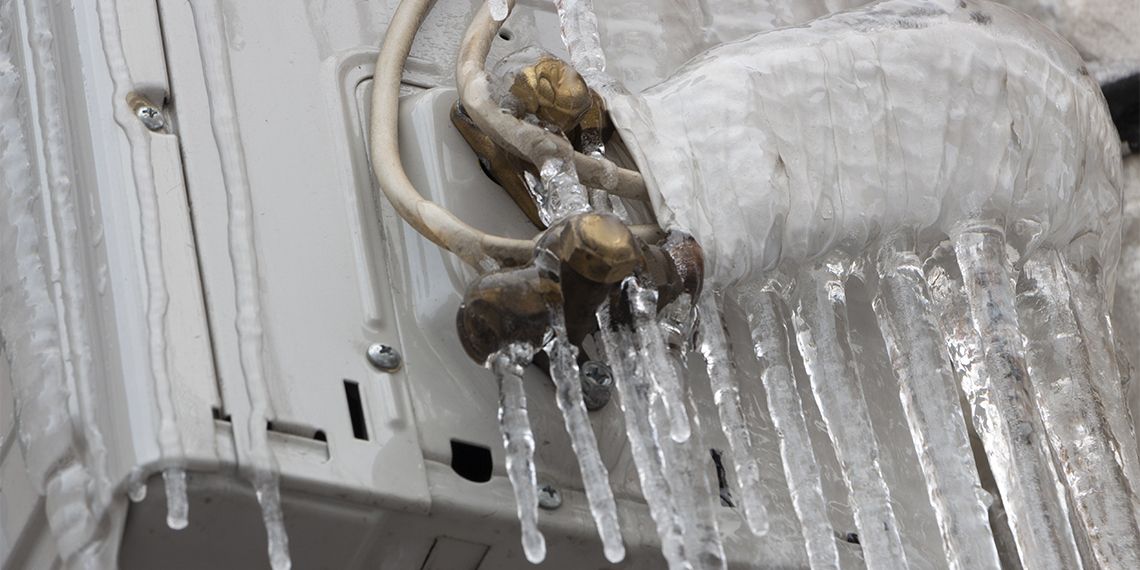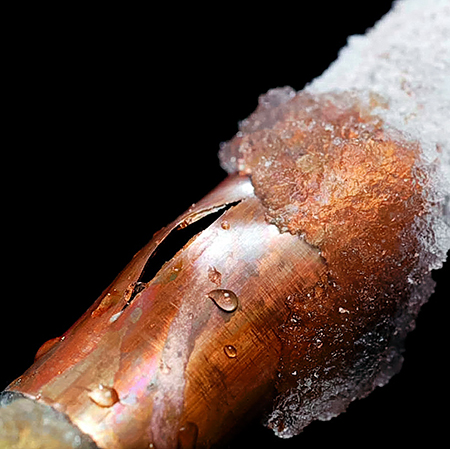My AC Pipe Is Frozen - What Should I Do? Guidance for Residents
My AC Pipe Is Frozen - What Should I Do? Guidance for Residents
Blog Article
What are your opinions with regards to How can I fix an air conditioner’s frozen pipe??

Introduction
Uncovering that your a/c pipe is frozen can be worrying, specifically throughout hot summer months when you rely on your ac unit one of the most. Understanding what to do in such a situation is critical to stop additional damages to your air conditioning system and ensure your comfort inside.
Comprehending the Causes
A number of factors can add to the freezing of an AC pipeline. Understanding these reasons can help you resolve the concern efficiently.
Absence of Airflow
One common root cause of an icy air conditioning pipeline is inadequate air flow. When the airflow over the evaporator coil is limited, it can trigger the coil to go down below freezing temperature, leading to ice formation on the pipeline.
Low Refrigerant Levels
Not enough refrigerant levels in your air conditioner system can also cause a frozen pipeline. Low cooling agent levels can trigger the stress in the system to go down, causing the cold of wetness on the evaporator coil.
Winter Conditions
In colder environments, freezing temperatures outside can add to the cold of a/c pipelines. If your a/c unit is not appropriately shielded or if there are leaks in the ductwork, chilly air can penetrate the system, triggering the pipeline to freeze.
Dirty Air Filters
Dirty or stopped up air filters can limit air movement in your air conditioning system, causing different concerns, consisting of an icy pipeline. It's necessary to change or cleanse your air filterings system frequently to make sure correct airflow and prevent ice accumulation.
Indications of a Frozen Air Conditioner Pipe
Acknowledging the indications of an icy AC pipeline is essential for punctual action.
Decreased Airflow
If you discover a significant decrease in air flow from your vents, it can show an icy pipeline.
Ice Buildup on the Pipe
Noticeable ice build-up on the refrigerant line or the evaporator coil is a clear indication of a frozen AC pipe.
Strange Sounds from the Unit
Uncommon audios, such as hissing or bubbling, originating from your air conditioner device can signal that there's ice present on the pipe.
Immediate Actions to Take
When faced with an icy air conditioner pipeline, it's vital to act quickly to stop more damages to your air conditioning system.
Shutting off the air conditioning
The initial step is to turn off your a/c unit to avoid the system from running and intensifying the issue.
Checking for Blockages
Inspect the location around the interior system for any type of obstructions that may be blocking air movement, such as furnishings or drapes.
Thawing the Pipe
You can use mild techniques like putting towels soaked in cozy water around the icy pipe to help thaw it gradually.
Safety nets
Taking safety nets can assist avoid future events of an icy air conditioning pipeline.
Regular Maintenance Checks
Set up regular maintenance contact an expert HVAC specialist to make sure that your a/c system is running effectively.
Transforming Air Filters
Regularly change or clean your air filters to stop airflow limitations and keep optimum efficiency.
Protecting Exposed Pipes
If your a/c pipes are revealed to cold temperature levels, think about insulating them to stop cold throughout winter months.
Seeking Professional Help
If DIY approaches stop working to deal with the issue or if you're uncertain regarding just how to proceed, it's ideal to look for aid from a certified HVAC service technician.
When DIY Methods Fail
If your efforts to thaw the pipe or address various other problems are unsuccessful, it's time to call a specialist.
Importance of Hiring a Professional HVAC Technician
A licensed HVAC specialist has the know-how and devices required to diagnose and repair issues with your a/c system safely and properly.
Conclusion
Taking care of a frozen air conditioner pipe can be a discouraging experience, but recognizing exactly how to respond can assist lessen damage and restore convenience to your home. By recognizing the reasons, identifying the signs, and taking punctual activity, you can efficiently address the issue and protect against future incidents.
What to Do If Your AC Line Is Frozen
Make Sure All Supply and Return Air Vents Are Open
If you notice problems with airflow, the first thing you should do is check your supply and return vents. Supply vents distribute clean, conditioned air throughout your home. As this air becomes stale, it’s pulled into the return vent, where it’s reconditioned before being sent back out through the supply vent.
When these vents are closed, air won’t flow in the home. Before examining your AC, check the vents in every room and ensure they’re all open.
Check for a Dirty Air Filter
Another possible cause of limited airflow is a dirty air filter. Your air conditioner’s filters catch elements you don’t want to breathe in, such as dirt and dust. Over time, filters can become clogged, ultimately blocking air from flowing in and out. The lack of airflow can then cause the entire coil to freeze and will completely restrict any air from moving through it. The AC may need to be powered off for one to two days to allow the coil to thaw after replacing the filter to allow proper functioning of the unit. This debris can also accumulate on your AC’s evaporator coil, requiring a more serious repair. In general, air filters should be cleaned regularly (about every two weeks).
Assess Your Outdoor Unit
In addition to checking your AC, assessing the outdoor unit is a good idea. Also known as the condensing unit, it works with your interior unit to release heat outside. An issue with the outdoor unit can result in rising internal temperatures.
Overgrown Shrubs or Clogged Leaves
From leaves and twigs to shrubs and debris, there’s no shortage of outdoor elements that can accumulate around your condensing unit. When these elements get lodged inside the unit, they can block airflow. Fortunately, removing the blockage can solve the problem.
Sounds of a Broken Fan
Shrubs and leaves aren’t the only things that can impede your outdoor unit’s airflow. If the fan is broken, the unit won’t be able to properly get rid of heat — which means the internal temperature won’t go down. First, make sure the fan is spinning. If it is, check for the following sounds of a broken fan:
Buzzing Rattling Screeching Hissing Clicking Preventative Measures
Nobody wants to deal with a frozen AC line. In addition to causing problems with your air conditioner, they require professional repairs. On the bright side, there are preventative measures you can take to help ensure this issue doesn’t arise in the first place.
https://www.coopergreenteam.com/blog/what-to-do-if-ac-line-frozen

Do you enjoy reading up on Air Conditioner Frozen? How To Fix your Frozen AC Line? Put feedback down below. We'd be interested to listen to your ideas about this entry. Hoping that you visit us again later on. Don't hesitate to set aside a second to promote this blog posting if you appreciated it. Thanks for your time invested reading it.
Website Report this page